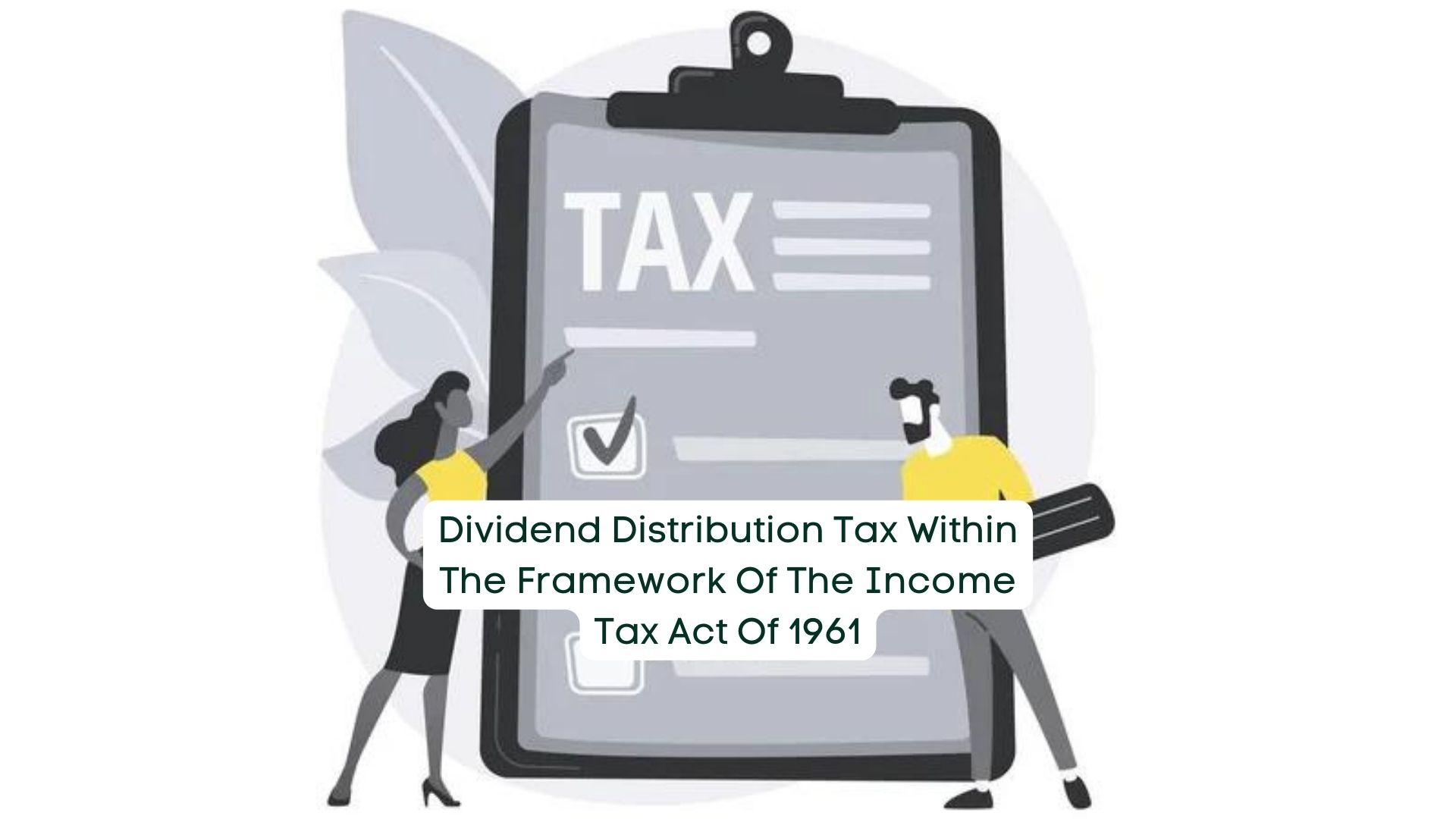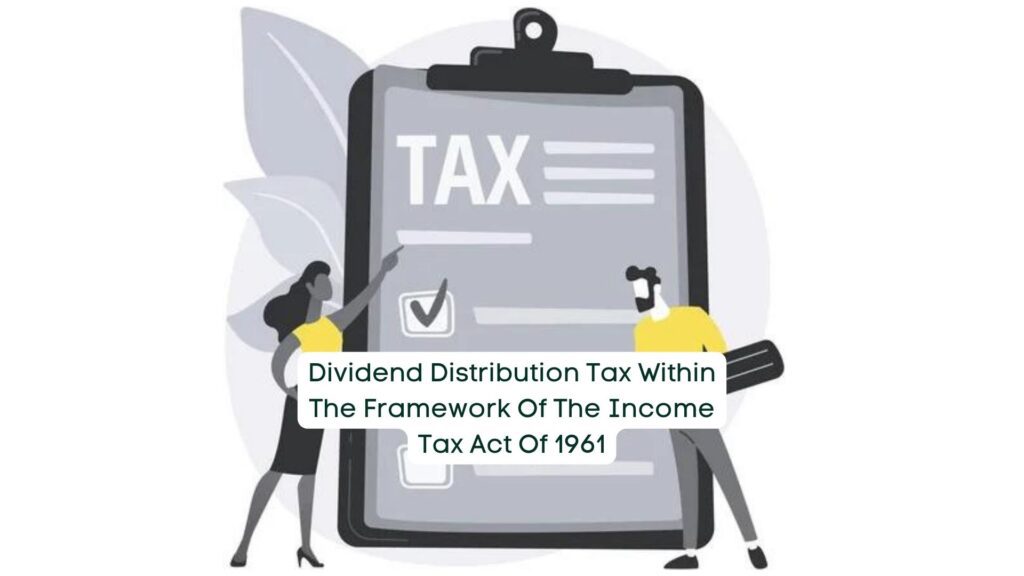
23 Feb Dividend Distribution Tax within the Framework of the Income Tax Act of 1961

Dividends serve as a means for corporations to distribute a portion of their profits to shareholders. In the past, a dividend distribution tax (DDT) was imposed on corporations, regulating the payment of dividends to shareholders. However, the Finance Act of 2020 brought significant changes, abolishing the DDT and reverting to the conventional taxation system, where dividends are taxed directly in the hands of investors. This transition has implications for both corporations and shareholders, altering the landscape of dividend taxation.
Definition of Dividend:
A dividend represents a distribution made by a corporation to its shareholders, typically as a share of the company’s earnings. This distribution can take various forms, including cash, stocks, or assets. The decision to pay dividends lies with the company’s board of directors, subject to shareholder approval. However, companies are not obliged to pay dividends, as it is contingent upon their financial performance and strategic goals.
Understanding Dividend Distribution Tax:
The Dividend Distribution Tax (DDT) was introduced in 1997 as a tax levied on dividends distributed by companies to their shareholders. Governed by Section 115-O of the Income Tax Act, the DDT was deducted at the source and taxed at the hands of both the company and the shareholder. Exceptions were made for shareholders receiving dividends exceeding Rs 10 lakh, subjecting them to additional taxation.
Abolition of DDT and its Ramifications:
The Finance Act of 2020 marked the abolition of DDT for domestic companies, effective from January 1, 2020. Consequently, dividends received by shareholders became taxable in their hands, eliminating the intermediary taxation at the corporate level. This shift streamlined the taxation process, making shareholders directly liable for dividend taxes.
Payment and Rates of Dividend Distribution Tax:
Under Section 115-O, domestic companies were previously subject to a 15% dividend distribution tax on the gross amount of dividends paid out. Additionally, dividends falling under Section 2(22)(e) were taxed at a rate of 30%, albeit being tax-free in the hands of the shareholder. However, with the abolition of DDT, these rates and provisions ceased to apply.
Key Provisions and Considerations:
Post-April 1, 2020, companies were relieved from the obligation of paying DDT on distributed dividends. Notably, adjustments were made regarding taxation on dividends exceeding Rs. 5,000 and the repeal of exemptions under Section 10(34) for the assessment year 2021-22. It’s imperative to understand that DDT is a separate tax liability for companies and does not qualify for deductions or credits under income tax laws.
Conclusion:
The elimination of DDT signifies a progressive step in India’s tax regime, aligning it with international standards and fostering a more conducive environment for investors. By shifting the tax burden directly to shareholders, the reformed system aims to enhance transparency and efficiency in dividend taxation. This transition underscores India’s commitment to modernizing its tax policies and stimulating economic growth.


No Comments